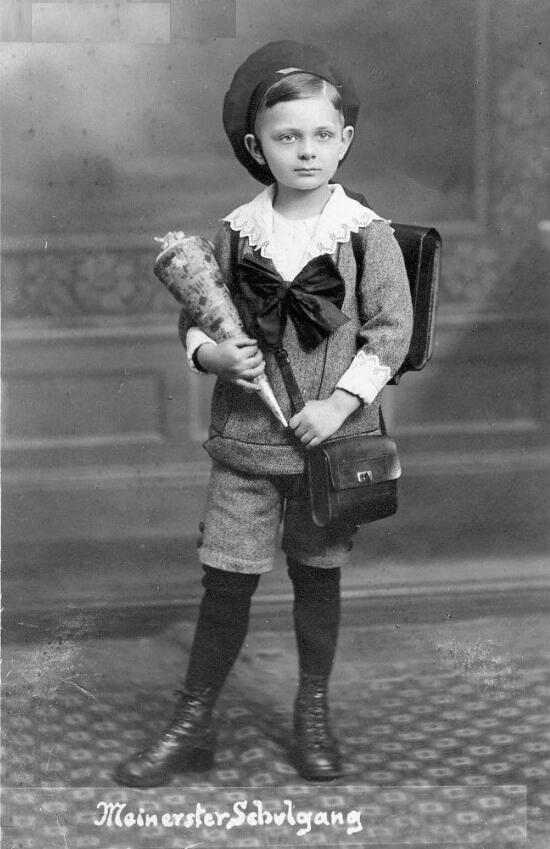
Figure 1.--This boy got a rather small cone. he portrait is dated 1921. Its a little hard to tell, but he is wearing a sailor suit. The sailor collar is done with eyelet lace. He looks to be wearing a tam with his sailor suit. |

|
The childrens' clothes still vary quite a bit. Boys wear military and sailor caps with them, but no longer sailor hats.There seem to be quite a number of outfits that looked to ve uiquely created by mother and not purchased in the store. Perhaps mothers just added trim to more standard outfits. This looks to be the case here (figure 1). All kinds of sailor suits were very popular. We see some many traditionally style suits. A good example is an unidentified boy wearing a sailor suit. We still see many non-traditional suits in the early 20s. These non-traditioinal suits were only worn by the younger boys just beginning school. Older noys wore more tradutionally styled sailor dsuits. Sailor suits were very popular, but boys also wore maby other types of suits. The boys in the 1920s where quite a range of different outfits. After the 1920s, boys clothin becomes much more standardized. The boys wear various styles. Most are dressed up in suits of varying descriptions. Sailor suits of course were not the only outfits for boys. Suits were very common, but not all boys wore suits. We see all kinds of different suits. Most of the boys did wear suits for the occassion. Long stockings were very common. We see different kinfs of footwear. Many boys wore study high-top shoes. We also see strap shoes and low-cut oxfords.
Not all the children wore their headwear for these portraits, but quite a number did. The childrens' clothes still vary quite a bit. Boys wear military and sailor caps with them, but no longer sailor hats.
There seem to be quite a number of outfits that looked to be uiquely created by mother and not purchased in the store. Perhaps mothers just added trim to more standard outfits. This looks to be the case here (figure 1). It looks to be a standard sailor suit to which mother has added a scalloped white "V-collar.
All kinds of sailor suits were very popular. We see some many traditionally style suits. A good example is an unidentified boy wearing a sailor suit. We still see many non-traditional suits in the early 20s. These non-traditioinal suits were only worn by the younger boys just beginning school. Older boys wore more tradtionally styled sailor dsuits.
Sailor suits were very popular, but boys also wore many other types of suits. The boys in the 1920s where quite a range of different outfits. After the 1920s, boys clothin becomes much more standardized. The boys wear various styles. Most are dressed up in suits of varying descriptions. Sailor suits of course were not the only outfits for boys. Suits were very common, but not all boys wore suits. We see all kinds of different suits.
Most of the boys did wear suits for the occassion. We see some children nore informally dressed. This was probably more common than represented in the photographic record.
We see a varirty of hosiery worn by children with their first day outfits. Long stockings were very common for German children in the 1920s. Both boys and girls commonly wore them. We think many school portraits showed the children wearing long stockings. German schools begin arouind the end of August. Often the weather had not yet turned cool, but it soon would. Thus we think mothers often dressed the children up in long stockings for their portraits. Wearing long stockings was seasonal. Black long stockings continued to be common. They were seen as rather formal by the 1920s. We see many children wearing lighter shades. The actual color other than black and white are difficult to assess fron the black-and white photography of the date. We believe that the long stockings worn were mostly brown shades like beige, but grey stockings were also worn. We also see white stockings, but they were more popular for the girls than the boys. We also see knee socks. Ankle soicks, however, were not very common.
We see different kinds of footwear worn by the boys beginning school. Many boys wore study high-top shoes. We also see strap shoes and low-cut oxfords. High-top shoes seem the mosdt common. We also see a number of children wearung strap shoes, nostly single bar strap shoes. We note both boys and girls wearing them. They seem to be dine in different colors, but this is also difficult to assessm in blck-and-white photographs. Strap shoes continued to be worn by by older girls, but became less common for older boys. An exception was a kind of casual strap shoe that we see older boys wearing.
Related Chronolgy Pages in the Boys' Historical Web Site
[Main Chronology Page]
[The 1880s]
[The 1890s]
[The 1900s]
[The 1910s]
[The 1920s]
[The 1930s]
[The 1940s]
[The 1950s]
[The 1960s]
[The 1970s]
[The 1980s]
Related Style Pages in the Boys' Historical Web Site
[Main first day school]
[Main country page]
[Long pants suits]
[Short pants suits]
[Socks]
[Eton suits]
[Jacket and trousers]
[Blazer
[School sandals]
Navigate the Boys' Historical Clothing School Uniform Pages
[Return to the Main German 1920s century school gift cone chronology page]
[Return to the Main German 20th century school gift cone chronology page]
[Return to the Main German school gift cone chronology page]
[Return to the Main NAZI schoolwear page]
[Australia]
[England]
[France]
[Germany]
[Italy]
[Japan]
[New Zealand]
[Scotland]
[United States]
Navigate the Boys' Historical Clothing Web Page
[Introduction]
[Activities]
[Biographies]
[Chronology]
[Clothing styles]
[Countries]
[Bibliographies]
[Contributions]
[FAQs]
[Glossaries]
[Images]
[Registration]
[Tools]
[Boys' Clothing Home]
